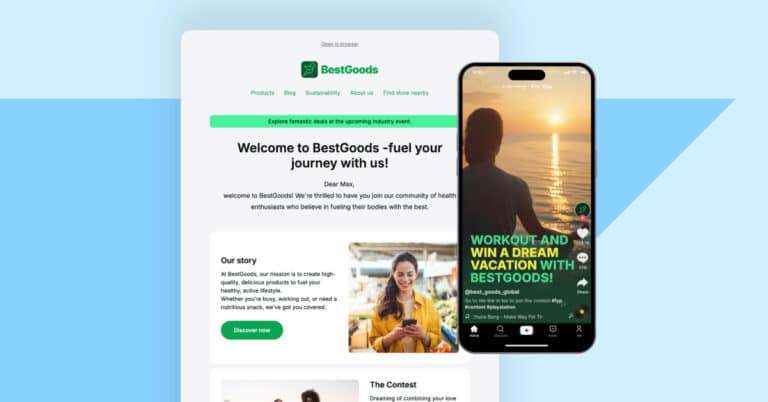I called a major manufacturer of beard trimmers… and what happened next astonished me.
After two rings a human being answered the phone. That’s right, a real person.
There was no automated greeting, no request for me to press zero to speak with someone, a human answered the phone. My jaw hit the floor.
When my shock wore off I informed the customer service representative that I would need a replacement for the blade of my beard trimmer.
Two minutes later the representative ordered a new part, sent over an estimated time of arrival, and asked if there was anything more she could do for me. Guess what? I refuse to buy a beard trimmer from another company. That short time on the phone changed my feelings about the company from a customer to a brand advocate.
Emotion in Action
There are a variety of reasons we connect emotionally with a brand.
I grew up believing Tide was the greatest laundry detergent because the TV bombarded me with Tide advertisements during Sesame Street.
Some of you use a product or service today because it’s what someone in your family used. A grandparent who drove a specific automotive brand, a parent who helped you open a savings account when you were 12 and you’re still with that bank today, a sugary cereal your aunt bought for when you had a sleepover at your cousin’s house.
You may feel connected to a brand because of a great experience. There’s the dealership who gives upgraded loaner vehicles to any customer whose car they work on. The restaurant where servers provide free appetizers and an apology from the chef when the food takes too long to cook.
Every organization has the potential to make a positive impact on someone’s life.
Wait! What About Science?
Customer satisfaction is vital for any company, but an article in the Harvard Business Review says the best way to increase customer value is to connect on an emotional level.
An emotionally connected customer is two times more valuable than a highly satisfied buyer. They’re less sensitive to prices, will visit your store more often, and buy more of your products and services.
So the big question is this, how do you connect with your customers on an emotional level?
It’s an interesting question because customers can’t explain why they’re emotionally attached to a brand. Let’s see what science says has to say about a customer’s emotional attachment.
The Net Emotional Value
The Net Emotional Value (NEV) identifies 20 emotions that can drive or destroy value for a company. According to the NEV, a customer interacts emotionally with your company on either a conscious or subconscious level.
The four clusters of NEV are:
- Advocacy: Customers feel happy and pleased.
- Recommendation: Customers feel trust, value, safe, and cared for.
- Attention: Customers feel interested, energetic, stimulated, exploratory, and indulgent.
- Destroying: Customers feel irritated, hurried, neglected, unhappy, unsatisfied, stressed, disappointed, and frustrated.
Every customer interaction may cultivate both positive and negative emotions. The more you tip the scale towards positive emotions, the better it is for customers.
The NEV goes beyond a customer merely stating they had a “positive experience.” Incorporate these emotions in your organization to enable an impactful customer connection.
High Impact Motivators
The High-Impact Motivators are the 10 most significant emotions that influence customer value.
Examples of High Impact Motivators
Below are some examples of how companies leverage High Impact Motivators to connect with customers on an emotional level.
Standing Out from the Crowd
People want something different. Maybe it’s supporting a cause. TOMS Shoes is a good example. Buy a pair and they donate a pair to a child in need. To date, they’ve donated over 93 million pairs of shoes.
Another example is Warby Parker. They offer fashionable glasses and donate a pair to someone in need when you make a purchase. So far they’ve donated over five million pairs of glasses.
A Sense of Thrill
Tesla stands out from the crowd. Not only are they a beautiful example of an all-electric vehicle, but they’re one of the safest cars on the road, and they’re a thrill to drive. Mash the pedal and roller-coaster forces shove you into the subtle seat leather.
Be the Person I Want to Be
You want to feel good about yourself, become a better you? This is probably why the fitness industry has grown year-over-year. People can transform themselves into a stronger, more confident person.
By leveraging the motivators above, your brand can target the emotional connection you wish to create with customers.
Where to Begin
Start with your employees. If front-line employees treat customers as just a process, customer service will be poor and buyers will be unhappy.
Reminds me of the time I called a major telecommunications company. They informed me they could do nothing about my issue. So I asked for the manager. The manager was unavailable. I hung up and called back to speak with a different representative, but got the same response. I switched my service after that debacle and haven’t been happier.
Teach employees empathy. What if your doctor had no empathy? Instead of breaking bad news to you in a soft, caring way, your doctor called and said, “Hey, your tests came back, you got two months to live. Good luck. Bye.” You’d be furious. Genuine empathy goes a long way.
Final Thoughts
Customers want authenticity and they can detect when it’s false. They want to hear you’re sorry when you mess up. They want to be happy with your product or service. They want their problems solved… it’s why they bought from you.
Creating an emotional connection with customers is not clear-cut. It’s not a step-by-step process you can implement right away, but if you start by training customer service on empathy and identify specific ways, you can connect with customers through High Impact Motivators and the Net Emotional Value, you may see a healthy increase for your company.
Bottom line is this, be good to your customers and they’ll be good to you.
Handpicked Related Content:













